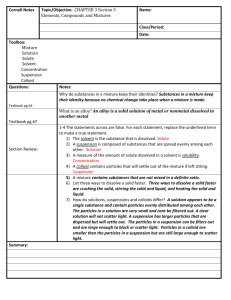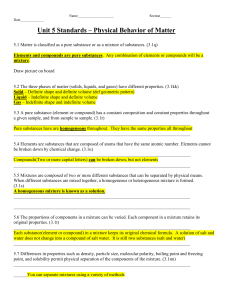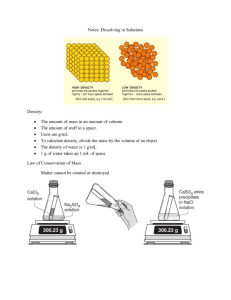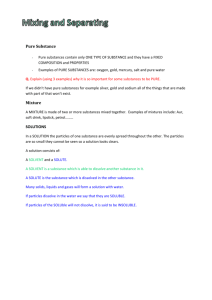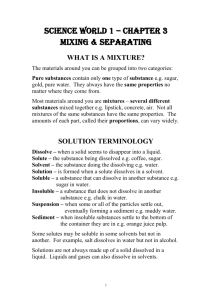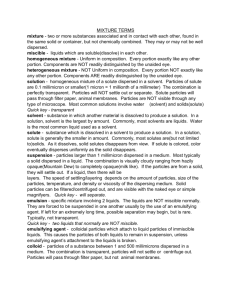Pure Substances and Mixtures Review Guide
advertisement
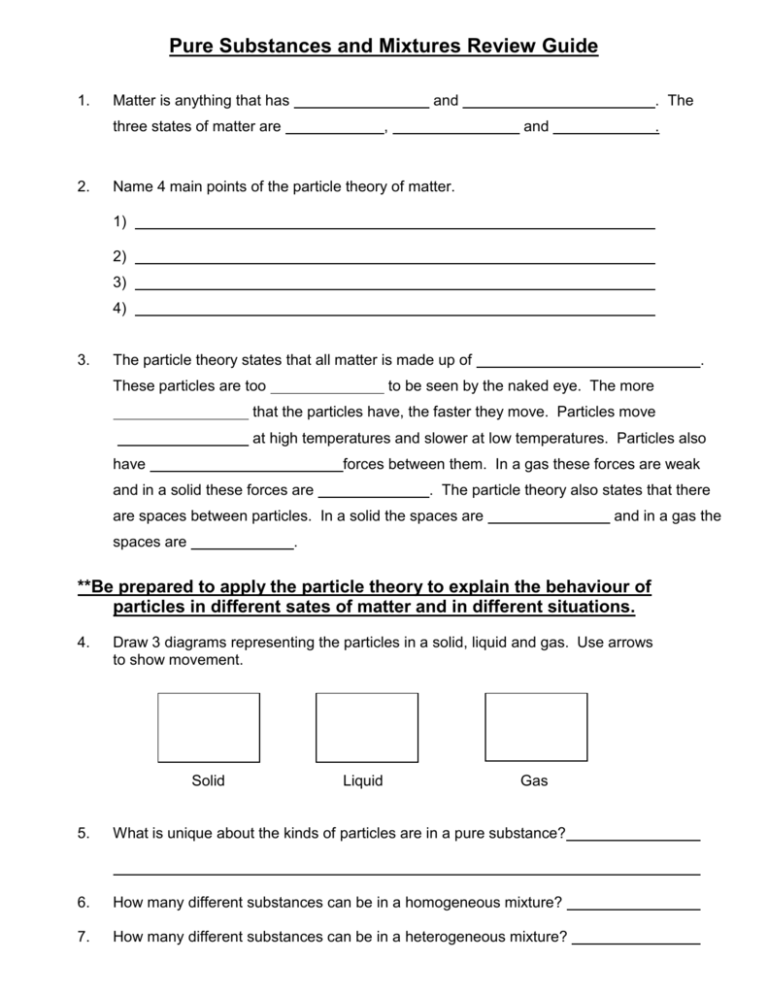
Pure Substances and Mixtures Review Guide 1. Matter is anything that has and three states of matter are 2. , . The and . Name 4 main points of the particle theory of matter. 1) 2) 3) 4) 3. The particle theory states that all matter is made up of These particles are too . to be seen by the naked eye. The more that the particles have, the faster they move. Particles move at high temperatures and slower at low temperatures. Particles also have forces between them. In a gas these forces are weak and in a solid these forces are . The particle theory also states that there are spaces between particles. In a solid the spaces are spaces are and in a gas the . **Be prepared to apply the particle theory to explain the behaviour of particles in different sates of matter and in different situations. 4. Draw 3 diagrams representing the particles in a solid, liquid and gas. Use arrows to show movement. Solid Liquid Gas 5. What is unique about the kinds of particles are in a pure substance? 6. How many different substances can be in a homogeneous mixture? 7. How many different substances can be in a heterogeneous mixture? 8. Which type of mixture is considered to be an even mixture? 9. What is another name for a homogeneous mixture? A heterogeneous mixture? 10. Define the term “properties” and give 2 examples. 11. When using a Venn Diagram to compare properties of different substances, list 5 properties that can be compared. 1) 2) 3) 4) 5) 12. Use a Venn Diagram to compare 4 properties of sugar and water. Sugar Water Sugar Water Solution 13. In a solution, the is the part of the mixture that gets dissolved, while the is the part of the mixture that the substance dissolves into. 14. Name the solutes and solvents in the following mixtures. a) salt and water solute = solvent = b) Jell-O solute = solvent = c) black coffee solute = solvent = d) air solute = solvent = e) steel solute = solvent = 15. How do the following factors affect the rate of dissolving? a) Higher Temperatures? b) Greater Surface Area? c) Agitation (stirring)? 16. What does solubility refer to? (text p. 32) 17. In a saturated solution the space between the solvent particles are 18. What type of solution has only some of the available spaces between the solvent particles filled? 19. According to the particle theory, explain why you would expect solubility to change with temperature.



